The Vavilov Institute is located in two beautiful old buildings in the main part of St. Petersberg. We were told that the government does not believe the Institute needs to be located on such prime real estate (right next to the Hotel Astoria and other big-money hotels), and so they do not provide them with the funds to maintain the buildings.
Some of the space of at least one of the buildings is rented out to other businesses and this building, which houses the herbarium and some of the gene bank, as well as many offices, is in the course of renovation — the outside is complete but the inside has far to go. This is the building that we spent most of our time in — it houses Sergey’s office.
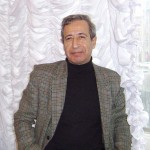
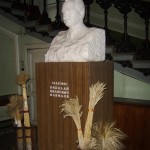
Left: Sergey Alexanian, our great host. Right: One of many Vavilov Statues.
We had the opportunity, though, to walk across a great traffic circle (the “backyard”) to the Institute’s building on the other side. This building was initially designed to be apartments for nobility (200+ years ago), and some of the interiors were reminiscent of the Hermitage, with gold plating on the walls and frescoes in the halls, and ornately carved ceilings throughout. This is where the Director of the Institute’s office lies, and also where the private Vavilov Museum is located. There are also two great halls capable of hosting at least 100 people for conferences and the like, and also many other offices that we did not see. Our tour of this building began with a walk around to see some of the more impressive rooms mentioned above.
Next we went to the private Vavilov Museum, which consists of several exhibits detailing the achievements of Vavilov as well as those of the Institute. There are maps depicting Vavilov’s Centers of Origin, and maps that show where he himself went on collecting missions over a 20-year period from the 19teens to 1940. The most impressive map, though, is the one that details all of the collecting missions that have been carried out by all staff of the Vavilov Institute over the past 100 years – this map is nearly all marked up, except for locations that are very far north. This is especially impressive when one considers the political situation with Russia for most of that time, and the financial situation now.
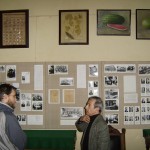
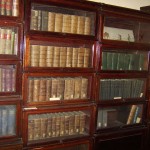
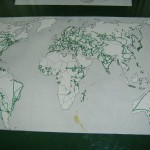
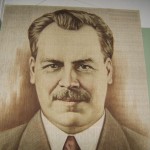
Photos from left to right: Sergey giving us the museum tour, books in Vavilov’s study, map of the institute’s collection missions, N.I. Vavilov.
One room houses artifacts that Vavilov collected on his journeys — mostly small tools used by people for agriculture. There are many photos of various collecting missions and events, as well as a special area with photos of the scientists who died in the winter of 1940. The next room houses the Private Study of Vavilov Himself, which has been reconstructed just as it was when he was the Director, with the same furniture and even telephone and lamp. All throughout the building were various photos, paintings, and busts of “The Great Vavilov,” some older and some newer, so that we never forgot where we were and whose influence reigned supreme.
After our tour of the building and the museum, we were honored to speak with the Director of the Institute for a few minutes. He was quite reserved, and the language barrier didn’t help, but we spent a few minutes telling him about our project (through Sergey’s translation). We were very grateful for the Russian translation of our homepage, so he could read more about the project later. He told us a bit about his experiences as Director, and also about his previous position as Director of one of the field research stations in Kazakhstan where he studied alfalfa (lucerne). He told us he really enjoyed his days as a field scientist, and as Director of the Institute he still takes time to visit the field research stations and go on collecting missions. As a scientist, he prefers research to the administrative tasks of running the Institute, but he says, someone has to do it.
He then excused himself for a moment and came back with what looked like a small leather wallet. He opened it and presented us with its contents: a bronze medal created to commemorate the 100th anniversary of Vavilov’s birth in 1887. The medal, presented to the Seed Ambassadors Project, is to remind us as an organization that we should “never be lazy, and always work very hard,” because the work we are doing is very important. He told us we were “the children — no, no — the grandchildren of Vavilov.” We all laughed at that, considering what Vavilov might think about two Americans being dubbed his honorary grandchildren. We thanked him profusely for the medal and returned to Sergey’s office to learn a little about the way Russia works.
The rest of our time in russia we spent walking around the bussy streets of St Petersburg (especially the crazy Nevsky Prospect) checking out the sights and trying not to spend money. The Russian Ethnographic Museum was great to see and experience the stories and artifacts of the amazingly diverse land they call Russia.
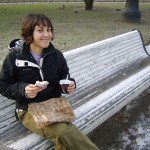
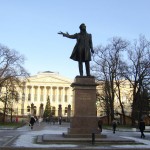
Left: Coffee and a frozen park bench. Right: Statue at Arts Square outside the Russian Ethnographic Museum.
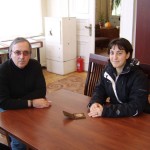
Please note that the winter in which the greatest number of scientists died of starvation at the Institute was the winter of 1941/42, although some of them died later before the siege was lifted in January 1944. In 1940 (the date you gave) Hitler had not yet invaded the (then) Soviet Union.